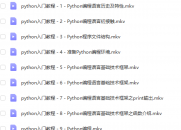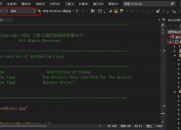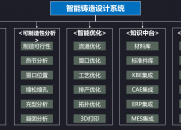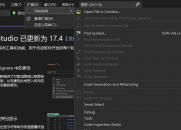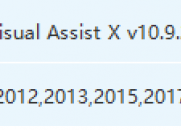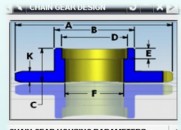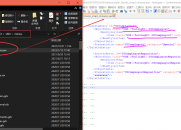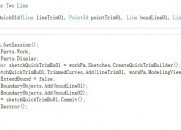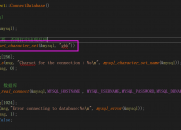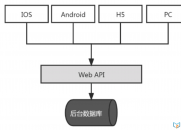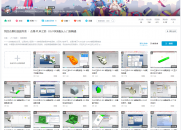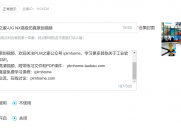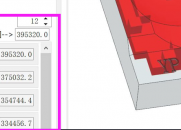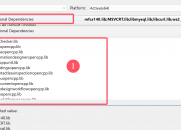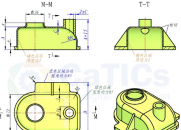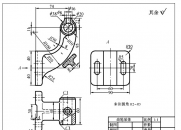|
|
请使用QQ关联注册PLM之家,学习更多关于内容,更多精彩原创视频供你学习!
您需要 登录 才可以下载或查看,没有账号?注册

x
NX二次开发源码分享: 创建精确外轮廓
8 [7 i' u g. p0 U5 G, ^- S+ v+ F5 E6 L* S2 s
UF_CURVE_create_shadow_outline (view source)7 r( H4 s, @; I0 c, }
* z m) `0 a/ ~: ~
Defined in: uf_curve.h; y0 p+ D% l4 [; }7 {! _5 S
. J( z2 D6 n. D( v! p2 }! q, p [* i
6 t1 C9 A0 I2 H7 U5 cOverview
: R4 m$ |$ M- X" w7 p8 `1 ~: V2 ~
Create shadow outline for a given array of solids. Solids passed to this
2 e; e$ C7 B2 A* L, ?routine must be on a selectable layer and visible. If created shadow curves
; |: I/ T h! Q1 j0 o; X# ucan not form loops, please use UF_CURVE_create_shadow_curves instead to get 4 V+ I/ \* A8 \( z8 A) ]' q% K/ w# s
shadow curves.
* \6 G+ C) r4 h# M' Y5 `; v, q) u) m. E5 l( h
5 W9 x+ y6 S. P, L O% z[hide], D' h. U8 g2 r- z
* X, u6 N: L- f1 P
[mw_shl_code=csharp,true] void DoIt()
' @5 S" H* S- E8 y5 ?# M {
! _# M# E* X9 u: C' j, w) R% b if (theSession.Parts.Display != theSession.Parts.Work)% y- F# k; z; w5 s
theSession.Parts.SetWork(theSession.Parts.Display);: V. |* P' N4 a7 b
$ \9 y: a8 m1 R: }4 c
- g. v- c, ^% Q TaggedObject[] theBodies = null;
' G1 e% F; L+ V, U if (SelectBodies("Select Bodies", ref theBodies) == Selection.Response.Ok)
7 @, O+ _% M( i3 I {
" s% U/ ` H4 [! y8 | Echo("Selected Bodies: " + theBodies.Length.ToString());$ P6 ^, R# L9 l- y. n! V4 k1 S, [
Tag[] theBodyTags = new Tag[theBodies.Length];
7 W: J0 p' ^$ j5 l3 b; v: l% c- | for (int ii = 0; ii < theBodies.Length; ii++)
2 t% C% d8 e2 J2 z% P( f O theBodyTags[ii] = theBodies[ii].Tag; M2 m) L* }! ?. d, ^/ A8 d
/ q8 }3 m$ U, ~" y: M
List<Curve> theOutlineCurves = new List<Curve>();/ J/ k0 ?* o# u0 q! ]
ModelingView workView = theSession.Parts.Work.ModelingViews.WorkView;% E9 N9 b, Y- H2 ?
int loop_count;- ^3 u# g' P; s
int[] count_array;
6 S6 ^& M: _' X6 Q2 Q- j Tag[][] curve_array = null;8 ]* q8 V4 T" l' }& R" k& e; H
double[] tol = new double[2];) u9 _- a. E& m5 F7 f
7 U7 s, C) m9 b* r) a$ ~; u% i; n# i) B
theUFSession.Modl.AskDistanceTolerance(out tol[0]);
' z/ L# A: J+ ]; n theUFSession.Modl.AskAngleTolerance(out tol[1]); X$ L' q6 z: h: i
2 Y# B7 k; [) H n$ Y+ x theUFSession.Curve.CreatePreciseOutline(theBodyTags.Length, theBodyTags,9 I! F& B* [4 x' T- m2 ?8 B |
workView.Tag, out loop_count, out count_array, out curve_array, tol);- j, I6 z& I8 s. o! V
0 ]+ B; v, ?) n: l+ \9 E+ H; V
Echo("Precise Outline Loops: " + loop_count.ToString());9 ~) Q0 B2 M' J; i9 o
for (int ii = 0; ii < loop_count; ii++)
$ H: }' m4 I7 b for (int jj = 0; jj < count_array[ii]; jj++)1 G+ b0 c# z+ H
theOutlineCurves.Add((Curve)NXOpen.Utilities.NXObjectManager.Get(curve_array[ii][jj]));
E( J1 i- F' H1 Q& T ?3 { Echo("Precise Outline Curves: " + theOutlineCurves.Count.ToString());
L, L2 e% c6 e3 i1 {
7 I1 q+ v- ^* ^6 S, _- I- _ /* If created outline curves can not form loops, use UF_CURVE_create_precise_outline_curves instead
4 D8 J1 h' W$ f( |3 x int curve_count;
$ d2 E# g4 p* ^# L% N7 x' s4 ]1 { Tag[] outline_curves = null;% w) B* i0 L0 [
theUFSession.Curve.CreatePreciseOutlineCurves(theBodyTags.Length, theBodyTags, 5 L! l$ p# n" i$ ^" X4 h" A$ N* y
workView.Tag, out curve_count, out outline_curves);
9 C: E: p! q# R Echo("Precise Outline Curves: " + curve_count.ToString());& h# [7 A5 L" n- o, w0 R
*/, p1 a' Y9 ^8 ^. y1 u
}( P6 ?" Z$ K* ^
8 O2 h) e' y p7 g
}[/mw_shl_code]
2 L* M. ?1 M, ]# U[/hide]
" r: \1 U4 z6 q |
|
